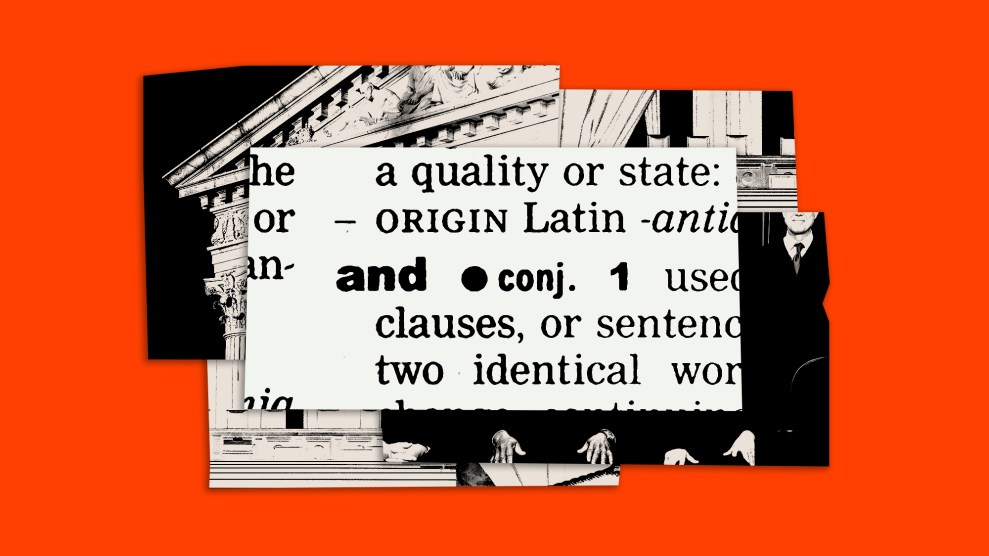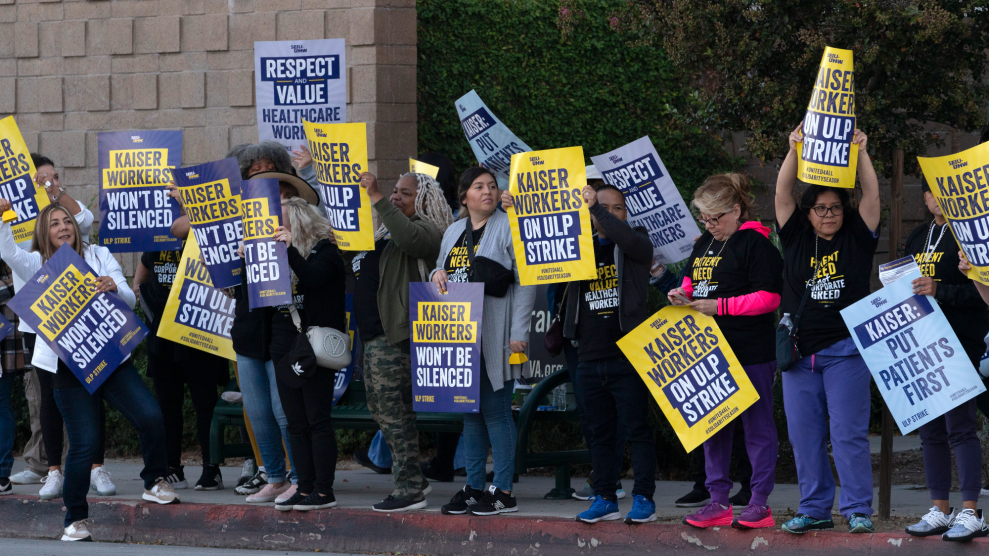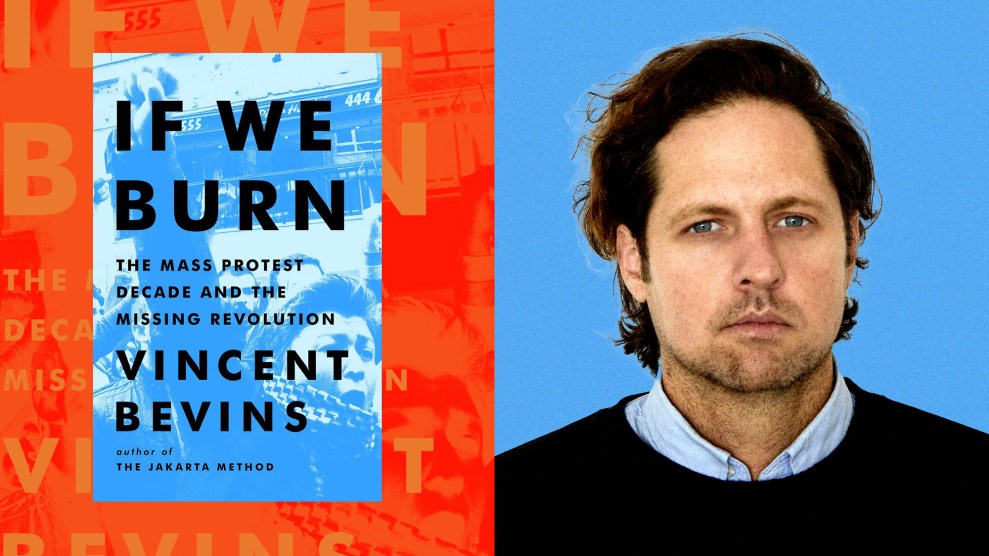We’re on our way to Yucca Mountain. And there are some things you should know before we get there. That is, before the Bush administration and Congress decide once and for all to entomb the nuclear age’s most deadly legacy in the Nevada desert about 100 miles northwest of Las Vegas. The most important thing to remember is this: It’s not about Yucca Mountain. And yet it is.
The other thing to keep in mind is that there is not just one Yucca Mountain. There are three. There is Yucca Mountain the place, a heap of ash and rubble that was blasted from a volcano some 12 million years ago and cemented together and eroded over eons into the shape of a wave breaking westward across a desert sea. There is little love lost for this Yucca Mountain, even among Nevadans like me who cultivate a taste for such unworldly landscapes. If I didn’t have to come to Yucca Mountain, I wouldn’t. And neither would you.
But we do. Because there is another Yucca Mountain. And this Yucca Mountain is the political answer to the question of what to do with spent fuel from 118 commercial nuclear reactors, 10 nuclear-weapons plants, and 37 research reactors around the country. This Yucca Mountain offers salvation for a nuclear industry poised for a comeback—and for politicians from states that don’t want the highly radioactive waste stockpiled within their borders. Nearly 20 years ago, the federal government signed a contract promising that it would take charge of the spent fuel, which is now stored in dry casks and cooling pools at the plant sites. The political Yucca Mountain is the reason we are here.
And finally, there is Yucca Mountain the computer model. This Yucca Mountain is the most difficult to see, let alone understand. It is the virtual product of a program called a Monte Carlo simulation that calculates how much risk the real mountain’s specific flaws—water percolating through the rock, groundwater flowing beneath, potential earthquakes and volcanic eruptions—will pose over the thousands of years that the waste will remain dangerously radioactive. In its ethereal way, this ghost of Yucca Mountain embodies both the technocratic hubris and the gambler’s faith in the odds that have brought us to the brink of a decision whose consequences, as acknowledged by everyone involved, we cannot foresee.
By the end of this year, the Department of Energy is scheduled to issue its final recommendation on turning Yucca Mountain into the nation’s first and only high-level radioactive-waste repository—a permanent graveyard for 70,000 tons of some of the most deadly and long-lasting toxins ever made. There is very little doubt about which way the recommendation will go. President Bush has called nuclear power “a major component” of his energy plan; the administration wants to extend the licenses of existing reactors and encourage the building of new ones. And as Energy Secretary Spencer Abraham told cnn’s “Moneyline” in May, “If we can’t find a repository for the waste, then it is very unlikely we would see new plants built.”
Once the recommendation is made and the president formally endorses it, the state of Nevada will most certainly file a formal objection. That protest will send the decision to Congress, where a simple majority of both the House and the Senate will be all that is needed to override the state’s pro forma veto.
Congress doesn’t much care about the real Yucca Mountain. Earlier this year, an Energy Department document put it succinctly: “The technical suitability of the site is less of a concern to Congress than whether the nuclear waste problem can be solved at an affordable price in both financial and political terms.” (Officials quickly disavowed the memo, blaming a contractor for the inadvertently telling wording.)
The “technical suitability” of Yucca Mountain, however, is what has proved most difficult to establish. Over 20 years of poking and prodding, this spot has become one of the most intensely studied pieces of real estate in the world, at a cost of close to $3.4 billion so far (and an estimated $50 billion more if the repository is built). Researchers have found that the mountain is crisscrossed by earthquake faults and that there are dormant volcanoes nearby. But the main concern in this arid spot turns out to be water.
Only an average six inches of rain fall on Yucca Mountain each year, barely enough to keep a sparse covering of grass and creosote bush alive. At first, the volcanic ash that makes up the mountain was thought to be so tightly compressed that what little water there is would not flow through the layers of rock. But as geologists dug into the mountain, they found that the rock is riddled with fractures. On average, they discovered a fracture every couple of inches. And they found water moving through the fractures.
They thought the water was moving slowly. But in 1996, they found chlorine 36—an isotope left by atmospheric bomb testing at the nearby Nevada Test Site in the 1950s—in water sampled at the level where waste would be stored, 800 feet underground. That meant rainwater could percolate down to the waste-storage area in just 50 years, and in another 50 years or so could reach the aquifer 1,000 feet farther down.
Originally, scientists also believed that if contamination escaped to the aquifer, most of it would cling to the rock and was unlikely to reach the nearby Amargosa Valley, now home to 1,500 people and a dairy farm that produces 41,000 gallons of milk a day. But studies have since found that plutonium from underground bomb tests hitched a ride on microscopic specks of clay suspended in groundwater and moved nearly a mile in 30 years—much faster than expected.
Add all of that up, and Yucca Mountain no longer looks like the perfect site to bury material that by law must be kept isolated from the environment for 10,000 years (though the half-lives of some of the most potent elements in the waste, such as plutonium, are much longer). In fact, the Energy Department has essentially conceded as much. It now asserts that what will protect the waste is not the mountain itself, but a special kind of canister made from a nickel-based metal called Alloy 22. The department says the metal—which has been around for a few decades but tested for just three years—will last about 12,000 years.
That is where Yucca Mountain the computer model (officially known as a “total system performance assessment”) comes into the picture. The analysis uses a Monte Carlo simulation, a technique commonly employed in science and business to model the probability of various outcomes in a complex situation. Take the probability that water will drip through the cracks in the mountain and onto the waste canisters; mix that with the likelihood that the canisters will corrode; add to that the probability that water will carry the contamination to the aquifer below; and finally, factor in the chances that a family living nearby will drink that water. Incorporate the possibility of a volcanic eruption, and of another ice age making this a much wetter place, and then throw in the probability that a future prospector—let’s call him the “unluckiest man in the world,” as Energy Department scientists do—will decide to drill or dig at the site.
After sampling all of these variables many times, as if drawing cards for hundreds of poker hands, the Monte Carlo simulation spits out a probability curve. It estimates that radiation is unlikely to leak from the site for the next 10,000 years (if the canisters last that long; if they don’t, all bets are off). By then, the model suggests, the radiation will have diminished, and contamination from the repository will be partially absorbed in the rock and diluted in the water under Yucca Mountain. So the dose to a hypothetical family in Amargosa Valley won’t rise above 15 millirems—the maximum allowed by the Environmental Protection Agency—for hundreds of thousands of years.
“In some sense, it is science fiction to project out 300,000 years,” Abraham Van Luik, the official in charge of the modeling, once commented while showing me around Yucca Mountain. “It gets more and more difficult to defend your assumptions as you move into the future.” But, he hastened to add, “our modeling is overconservative. Absolutely no one is going to get hurt by this repository for hundreds of thousands of years.”
The problem, some experts warn, is that “absolutely” is not something that can be said about a model based on probabilities. The Energy Department likes to say that the model has revealed “no showstoppers” at Yucca Mountain—no single factor that would disqualify the site. But Rodney Ewing, a nuclear-waste management expert who served on the peer review panel for the Yucca Mountain model in 1998, says the computer simulation wouldn’t know a showstopper if it saw one. “The uncertainty in these analyses was so large as to make them unusable,” explains Ewing, who in 1999 published a scathing article in the journal Science, criticizing the department’s reliance on the computer model. “One should not expect greater success with such a prediction than we have in other fields,” he says, “such as predicting which presidential candidate gets the electoral votes from Florida.”
In fact, says Ewing, we have a lot more practice predicting electoral results than we do forecasting how a complicated combination of geology and engineering will perform over thousands of years. “If an airplane were built in this way,” he says, “that is, smaller versions of the plane hadn’t been test-flown, but you were assured that good and competent engineers and scientists had modeled the plane’s ability to fly, would you fly on the first airplane based on these analyses?”
If that prospect makes you nervous, just try to remember this: It’s not about Yucca Mountain.
And yet it is.












